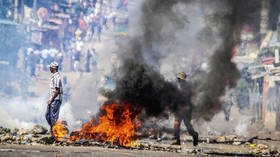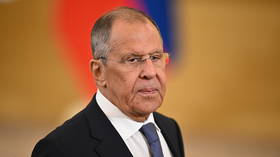US shadow unit’s deadly ‘self-defense’ strikes in Syria revealed – media

The secret strike cell behind a bombing that killed 70 civilians in Syria reportedly had a habit of playing fast and loose with the rules to keep Hellfire missiles raining down on militants, regardless of collateral casualties.
The 2019 Baghuz strike and the Pentagon's apparent attempt to cover it up, which were exposed by the New York Times last month, were reportedly just one episode among many where US forces in Syria failed to minimize civilian casualties. According to a fresh expose by the newspaper published on Sunday, the Delta Force unit that ordered the strike had a “pattern” of launching “reckless airstrikes” in its pursuit of inflicting damage against the terrorist group Islamic State (IS, formerly ISIS).
The “bad strikes” were ordered by relatively low-ranking US Army Delta Force commandos called Talon Anvil, with little oversight and veiled in secrecy, according to unnamed US officials interviewed by the newspaper. First created in 2014 in response to the IS rise as a major threat in Iraq and Syria, the group's role increased significantly in late 2016, when Gen. Stephen J. Townsend took command of the US offensive against the Islamists.
According to NYT sources, the general's order to let on-scene commanders approve airstrikes was effectively pushed even lower within Task Force 9, a classified Special Operations unit that oversaw ground operations in Syria. The decisions were entrusted to people usually ranking as sergeant first class or master sergeant within Talon Anvil.
In 2017, the operators reportedly started using a loophole to circumvent the usual restrictions applied to strikes conducted during offensive operations. “Nearly every strike” was claimed to be self-defense aimed at protecting US-backed militias on the ground, even if in reality the targets were “miles from any fighting,” NYT sources from the task force said.
The result was a skyrocketing number of civilian casualties. Former Pentagon and State Department adviser Larry Lewis, who co-authored a 2018 DoD report on civilian harm that was based on classified casualty data, said the rate was “10 times that of similar operations he tracked in Afghanistan.”
“It was much higher than I would have expected from a US unit,” he said. “The fact that it increased dramatically and steadily over a period of years shocked me.”
The Times offered several examples of “bad strikes”. A case said to be exemplary of the recklessness took place in early March 2017 in the town of Karama, according to the newspaper. A Talon Anvil operator reportedly messaged that all civilians had left the area and there were “lots of targets for us today because we want to go Winchester” – meaning expending all the ordnance carried by a Predator drone circling over the area.
After dropping a 500-pound bomb on a house, infrared cameras were described as showing women and children staggering away from what was left of it. An intelligence analyst quickly assessed that the strike left 23 people dead or severely injured and 30 lightly wounded, and that they all were likely civilians. Talon Anvil “paused only long enough to acknowledge the message” before moving on to the next target, a witness to the operation told Times.
There was apparently a growing resentment from other parts of the US forces involved in the strikes. At times, US Air Force pilots “refused to drop bombs because Talon Anvil wanted to hit questionable targets in densely populated areas,” the newspaper said. Complaints were reportedly coming from senior CIA officials embedded in Task Force 9, and even some members of the Talon Anvil would at times object against strikes ordered by their fellow operators.
Amid the tension, the strike cell allegedly started covering its tracks by having drones point their cameras away from targets right before a strike would hit. The NYT said it was done in “an apparent attempt to blunt criticism and undercut potential investigations.”
When interviewed by the New York Times, Gen. Townsend blamed any civilian casualties on “the misfortunes of war” and denied that the issue was not taken seriously. Several Special Operations officers denied any widespread pattern of reckless airstrikes by Talon Anvil.













